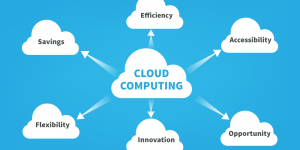
The idea of launching a Software as a Service (SaaS) subscription business has become increasingly popular in today’s digital landscape. SaaS models offer numerous advantages, such as scalability, flexibility, and recurring revenue streams. However, careful planning and consideration are crucial for success before you get started.
In this blog, we’ll explore seven key factors that aspiring SaaS entrepreneurs should consider before launching their subscription-based businesses.
What to consider before launching your new SaaS subscription business
With so many SaaS businesses already out there and new ones launching every day, it’s important to stand out from the crowd. But aside from having a unique idea, fundamental factors like billing and data security need to be considered — with all of these areas covered, you can launch your SaaS business with confidence and a greater chance of success.
Here are 7 things to consider before launching your SaaS subscription business.
1. Market research
Before diving into the world of SaaS subscription businesses, conducting thorough market research and validation is essential. This step provides valuable insights into your target audience (which can help you create a persona), their needs, and the competitive landscape such as the potential growth of your target market.

Conduct surveys, interviews, and focus groups to directly engage with your target audience to gather valuable feedback. By validating the demand for your SaaS product before you launch, you can avoid issues cropping up later down the line — by which point they’ll be harder to overcome.
2. A clear value proposition
Similarly to validating the need for your SaaS product through market research, having a clear value proposition is also essential. It defines the unique selling points of your product and communicates the benefits to your target audience, meaning the advantages of choosing your SaaS business over others are made clear.
You can show your value proposition by clearly articulating how your product solves your target audience’s pain points and improves their workflows, productivity, or cost savings in your marketing efforts. Don’t overcomplicate it. Simply emphasize your strengths and advantages over alternative solutions.
3. Pricing and billing
Another key thing to consider is your pricing structure and billing system. The last thing you want is to hike up your prices just a few months after launching, so get this figured out beforehand. Conduct thorough market research to understand pricing trends and customer expectations. Consider customer feedback obtained during the validation phase to ensure your pricing structure is competitive and perceived as valuable.
You then need to get your billing process figured out. As a subscription business, it’s important to choose reliable billing software that’s easy to use as you grow. Chargebee, for example, is easy for business owners and customers, with 23+ payment gateways and 100+ currencies. With an automated billing process, you won’t need to worry about manual billing and the errors that often come with it.
4. Customer acquisition and retention
Acquiring and retaining customers is a fundamental aspect of running a successful SaaS subscription business, especially when you first launch. Having a good marketing plan is one thing you’ll need if you want to scale your business, but you also need to target the right channels, whether that’s email marketing or social media.
Create lead-generation campaigns to attract potential customers. Offer valuable content, webinars, or demos to capture their interest and contact information and nurture leads through targeted communication and follow-up. But remember, delivering great customer service can often be the most effective way to gain and retain customers.
5. User experience and support
How are you going to deliver the best experience to your potential customers? From the get-go you need to be attentive, professional, and engaged with your customers. You might want to invest in a live chat system so your users can benefit from clear, instant communication, rather than waiting for an email reply and defecting to a competitor in the meantime.
Internally, your team also needs to be on the same page. Creating a knowledge base is a great way of keeping FAQs, manuals, and other important information in one place so it can be easily accessed when customers need support. Plus, your customer service process will run a lot smoother.
6. Scalability
Scalability is a critical aspect to consider when launching a SaaS subscription business. As your customer base grows, your infrastructure must be able to handle increased demand without compromising performance or user experience. Are your technology solutions scalable? Can your servers handle spikes in traffic to your website, for instance?
Develop a growth strategy that includes scalability planning to ensure that your infrastructure can support your expanding customer base. Getting this sorted beforehand will put you on the right path before you launch, so you don’t have to implement huge changes that could disrupt your business.
7. Security and data
SaaS businesses hold a lot of personal and business data for their customers, so you must have the right security measures in place. Safeguarding sensitive data builds trust and protects both your customers and your reputation.

Implement robust security measures to protect customer data from unauthorized access, breaches, or malicious activities. This can be achieved through a multitude of security functions, such as encryption, firewalls, and access controls, while you should also ensure you’re using a secure email provider and web hosting solution.
Additionally, you must comply with relevant regulations by familiarizing yourself with data protection regulations, such as the General Data Protection Regulation (GDPR), and ensuring your SaaS business adheres to the necessary compliance requirements.
Launching a SaaS subscription business requires careful consideration of various factors to ensure its success. Take your time to create a thorough plan, considering your value proposition, market trends, your pricing model, acquisition and retention strategies, user experience, your ability to scale, and your security measures.






